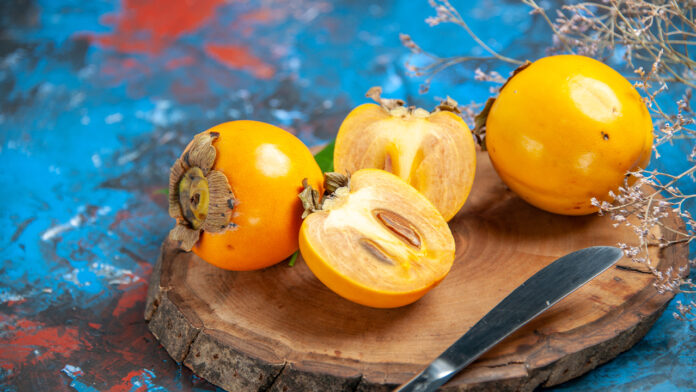In the realm of delectable fruits, kaki, commonly known as persimmons, stand out for their unique flavor, vibrant colors, and cultural significance. Originating from Asia, these fruits have found their way into diverse culinary traditions and have become a seasonal delight for many. In this article, we embark on a journey to explore the interesting facts surrounding kaki, from its ancient roots to its modern culinary uses, nutritional benefits, and the variety of flavors it brings to our tables.
The Botanical Marvel
Diospyros and the Persimmon Family: Kaki belongs to the genus Diospyros, which encompasses a wide range of trees and shrubs. The name Diospyros is derived from Greek, meaning “divine fruit,” reflecting the rich and flavorful nature of persimmons.
Diverse Varieties: While the term “persimmon” is often used broadly, there are distinct varieties of kaki. Two primary types include the Fuyu and Hachiya persimmons, each with its own unique characteristics in terms of shape, taste, and culinary applications.
The Fuyu Persimmon
Characteristics: Fuyu persimmons are known for their squat and round shape, resembling a tomato. They are typically eaten while still firm, with a sweet and mildly spicy flavor. The skin of Fuyu persimmons is edible, adding a delightful crunch to the fruit.
Culinary Uses: Fuyu persimmons are versatile in the kitchen. They can be sliced and added to salads, enjoyed as a crunchy snack, or used in baking. Their sweet and crisp nature makes them a favorite in both savory and sweet dishes.
The Hachiya Persimmon
Characteristics: Hachiya persimmons, in contrast, are acorn-shaped and must be fully ripe before consumption. When ripe, they are soft and almost pudding-like in texture. The taste is incredibly sweet with a hint of tanginess.
Culinary Uses: Due to their soft texture, Hachiya persimmons are often used in baking and desserts. They can be pureed and added to recipes for a natural sweetener or enjoyed on their own as a luscious treat.
Ancient Roots and Cultural Significance
Origins in Asia: Persimmons have ancient roots in Asia, particularly in China and Japan, where they have been cultivated for thousands of years. The fruit’s cultural significance is reflected in various traditions, folklore, and celebrations.
Symbolism in Japan: In Japanese culture, persimmons are associated with good fortune and prosperity. They are often presented as gifts during the New Year, symbolizing a wish for a sweet and abundant year ahead.
Nutritional Benefits
Rich in Vitamins and Minerals: Kaki is a nutrient-packed fruit, providing essential vitamins such as A, C, and E. It also contains minerals like potassium, manganese, and copper, contributing to overall health and well-being.
Dietary Fiber: High in dietary fiber, persimmons support digestive health. The fiber content aids in digestion, promotes a feeling of fullness, and helps regulate blood sugar levels.
Culinary Delights
Fresh and Dried Variations: Persimmons can be enjoyed fresh, eaten like an apple or sliced into salads. Additionally, they can be dried to create a delicious and nutritious snack, offering a concentrated burst of flavor.
Preserves and Jams: The sweet and flavorful nature of persimmons makes them ideal for preserves and jams. Their natural sweetness reduces the need for excessive sugar, resulting in a delightful spread for toast or desserts.
Seasonal Bounty
Harvest Season: Persimmons are typically harvested in the fall, with the peak season varying depending on the variety and region. This seasonal bounty adds a burst of color and flavor to autumnal dishes and festivities.
Farmers’ Markets and Local Orchards: Many enthusiasts eagerly anticipate the arrival of persimmon season, seeking out farmers’ markets and local orchards to indulge in the fresh and diverse offerings of this unique fruit.
Health Benefits
Antioxidant Properties: Persimmons contain antioxidants, including beta-carotene and lycopene, which play a role in neutralizing free radicals in the body. These antioxidants contribute to overall cellular health.
Anti-Inflammatory Effects: Compounds found in persimmons have demonstrated anti-inflammatory effects, potentially benefiting individuals dealing with inflammatory conditions.
Growing Popularity
Global Appeal: While persimmons have deep roots in Asian cultures, they have gained popularity worldwide. Their unique flavor profile and versatility in the kitchen have contributed to an increasing demand in diverse culinary traditions.
Incorporation in International Cuisine: Persimmons are now featured in a variety of international dishes, from Mediterranean salads to South American desserts. Their ability to complement both sweet and savory flavors makes them a favorite among chefs and home cooks alike.
Conclusion: A Symphony of Flavor and Culture
In conclusion, kaki, or persimmons, weave a delightful tapestry of flavor, culture, and nutrition. From the ancient traditions of Asia to the modern culinary landscape, these fruits have earned their place as a seasonal favorite. Whether enjoyed fresh, dried, baked, or preserved, persimmons offer a symphony of tastes that captivate the senses and celebrate the richness of our global culinary heritage. So, savor the sweetness of kaki and let it be a reminder of the diverse and delicious treasures our world has to offer.

